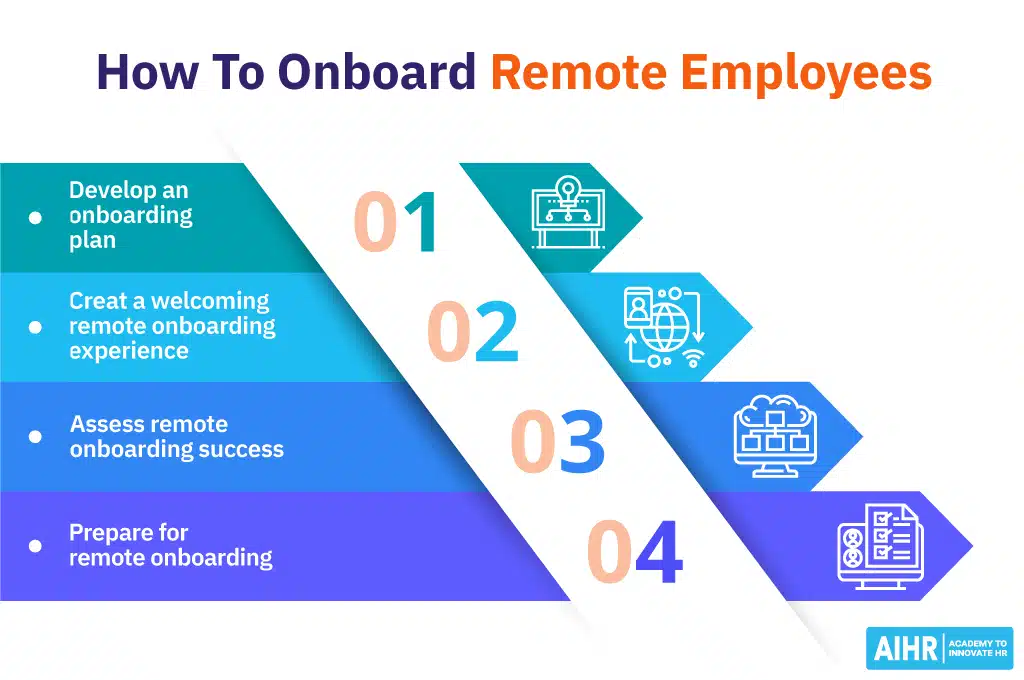Working remotely has gained popularity and has become even more essential due to the global pandemic situation we are facing today. Companies transitioning to remote work setups are now also embracing hiring and onboarding new employees remotely. A successful onboarding process involves new hires and sets them up for success within the organization. In this article written by a guest contributor, we will explore approaches for effectively onboarding remote employees to ensure they feel engaged right from the start.
1. Start with Clear Expectations:
Establishing clear expectations from the start is crucial to ensuring a smooth remote employee onboarding process. Give team members a comprehensive job overview and share any pertinent rules or procedures they should familiarize themselves with. Be sure to articulate their duties and performance indicators so they understand what is required.
When you take this action and clearly explain their position in your company, it creates a welcoming atmosphere for the employees as they start their remote work experience, which makes them feel appreciated and motivated.
2. Create an Onboarding Plan:
Creating an onboarding program is crucial for remote team members to get acquainted with the company’s culture and values, familiarize themselves with the technology tools used within the organization, and understand the team setup and communication channels in place.
Split the plan into parts like orientation meetings and training sessions to make it easier to follow along with virtual meetups with important team members included, too. This detailed approach helps new members learn and makes them part of the bigger picture even if they’re not there in person.
3. Provide Remote Communication Tools:
Effective communication pathways play a role in the success of remote teams. This is especially important for new team members as they go through their initial training phase, too! Make sure to equip them with resources that support interaction with team members, such as video conferencing applications like Zoom or Microsoft Teams and instant messaging platforms like Slack or Microsoft Teams Chat functionality.
Ensure that your remote team members are familiar with the communication platforms available to them and urge them to utilize these resources for cooperation, knowledge exchange, and connections with their coworkers. Promoting efficient communication right from the beginning will encourage new staff members to become involved and help them establish bonds with their virtual peers.
4. Foster Virtual Connections:
Working remotely may lead to isolation for some individuals, especially new employees who are still getting to know their colleagues within the company. To address this issue, consider arranging team-building exercises to foster a sense of connection and camaraderie.
One idea is to plan virtual coffee meetups or casual video calls where team members from departments gather for a chat unrelated to work and share stories about their hobbies or interesting experiences they’ve had recently. Additionally, you could pair each team member with a buddy already on the team to help them navigate the onboarding process and provide guidance when needed.
Establish these connections from the start of the employee’s experience to boost engagement and foster inclusion among your team members.
5. Provide Continuous Feedback and Support:
It’s important to stay connected and offer guidance and encouragement when welcoming remote employees aboard your team. Plan meetings with new team members to discuss any questions or difficulties they may encounter. During these sessions, you should also share feedback about their work and suggest areas where they could develop and enhance their skills.
Consistently assisting employees makes them feel appreciated and equips them with the essential direction to excel in their positions. It also demonstrates your commitment to their growth and encourages their involvement in the crucial initial phases of their jobs.
Conclusion
It is essential to ensure employees’ success in your organization. Craft an engagement base for new hires by establishing clear goals and effective onboarding plans. Equip them with communication tools. Encourage virtual connections to foster a sense of belonging. Offer feedback and learning opportunities to keep them engaged and motivated in their roles.
Effective onboarding should be viewed as a process that extends well beyond the initial weeks and even beyond the first month or two to truly impact your remote team’s engagement levels and ensure the long-term success of your new employees.






